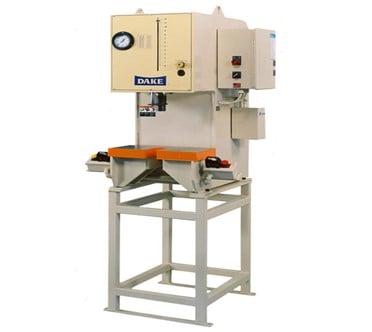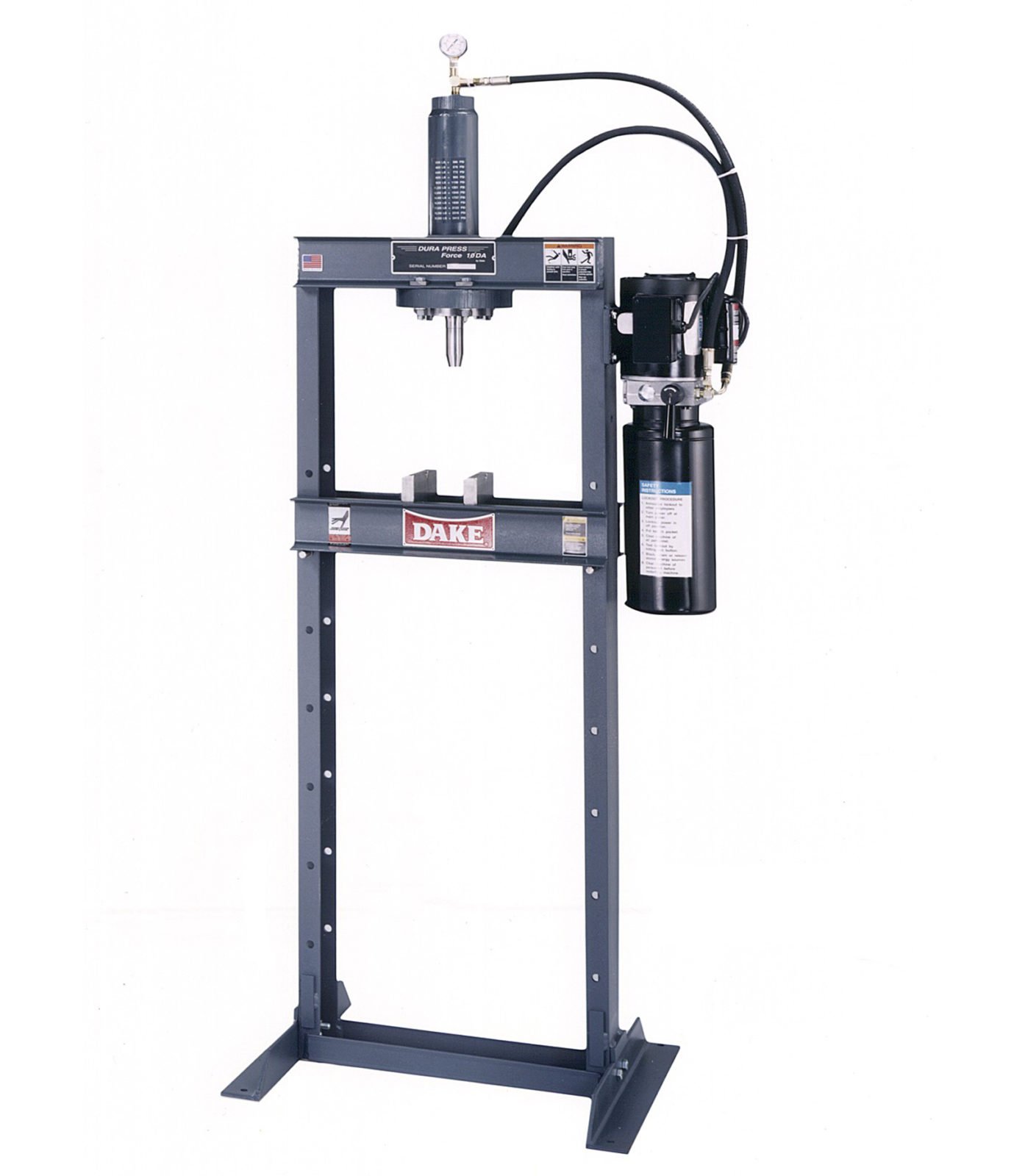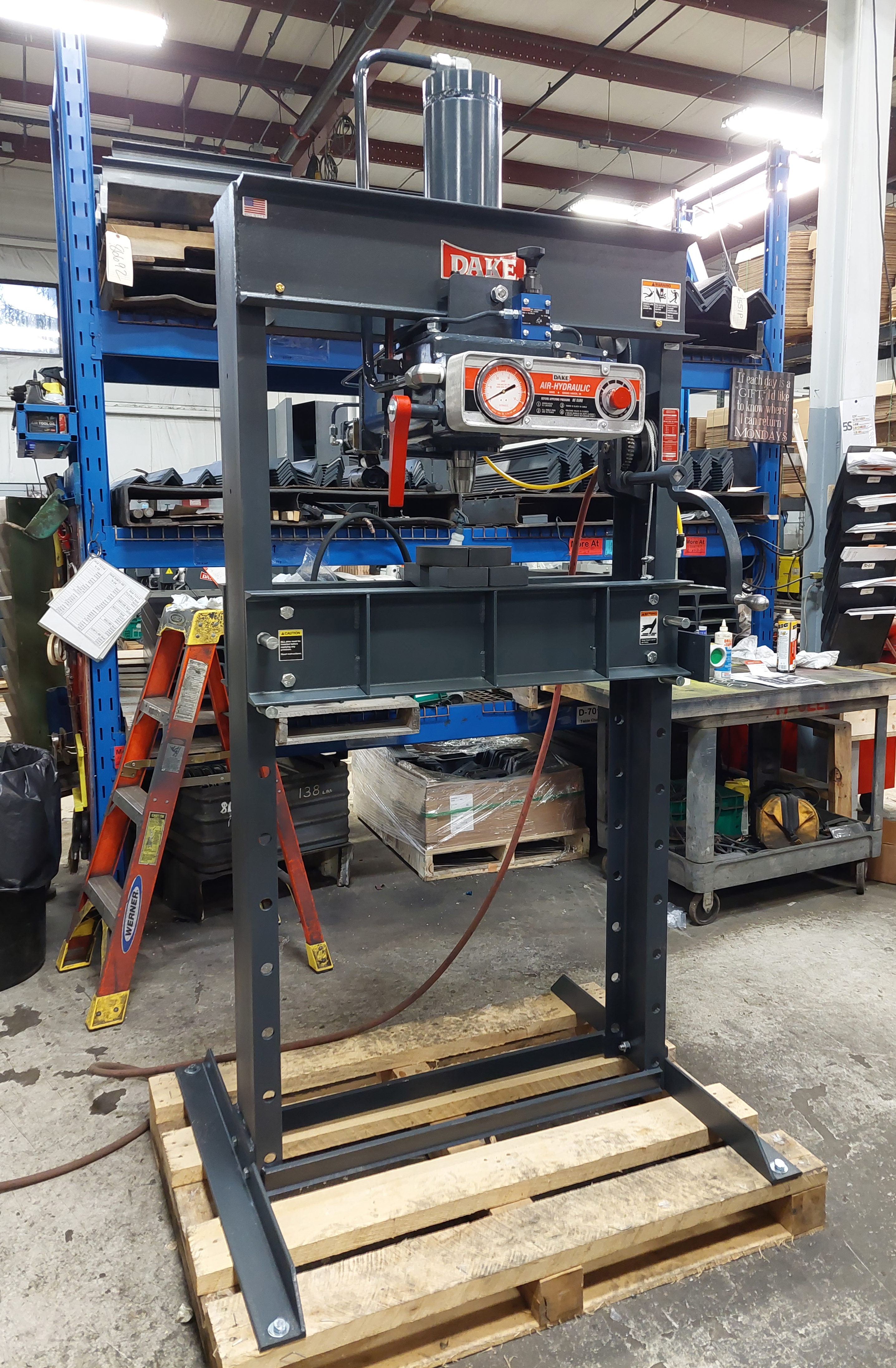C-frame presses are a common type of hydraulic press. Sometimes known as a “gap-frame press,” the C-frame derives its name from and is easily identifiable by its letter-C shape. These versatile presses typically take up a minimal amount of space in a metalworking shop. Like other types of hydraulic presses, these versatile presses help numerous applications across all kinds of industries.
C-frame bench presses usually range in capacity from 4 to 12 tons with about 12” of ram travel. The higher-quality machines consist of heavy-duty steel construction, hydraulic cylinders designed to withstand up to 3,000 psi, and safety features that prevent the ram from moving until the operator’s hands are clear.
Because of a C-frame’s three open sides, they can handle various material shapes and sizes. C-frame bench presses are often utilized for jobs that require a smaller bed size and lower tonnage.

The Dake C-Frame Bench Press Model 28-612 with optional pedestal
Benefits of a C-Frame bench press
In addition to the advantage of its open sides, C-frame presses offer several other benefits that include:
- Smaller footprint: C-Frame presses typically take up minimal floor space compared to most other hydraulic presses.
- More access points: C-frame presses provide easier removal of finished parts and make die maintenance and adjustments simpler.
- Ease of use and efficiency: The C-frame’s design also reduces stroke deflection while increasing work accessibility.
- Cost-effective: The C-frame bench press costs less when compared to other hydraulic press types.
Applications of a C-Frame bench press
While a C-frame bench press has numerous applications, one of its mainstays is stamping. Stamped parts are shaped from sheet metal using a die that has been machined into the shape of a part. The press’s ram pushes the metal through the die forming the part’s shape.
Manufacturers can also perform other metalworking processes, such as:
- Assembly: Fastening multiple parts together.
- Bending: Moving a metal strip or sheet around a straight axis and applying stress. The bend is permanent after the stress is removed.
- Blanking: Forcing a punch through a sheet of metal and into a die. The punched-out part is retained.
- Coining: Compressing the surfaces of a workpiece within a closed die.
- Compaction: Creating a part through the compression of powdered material.
- Crimping: Another assembly technique using a press and tool to fold and flatten material so that two pieces are securely fastened together.
- Draw and deep draw work: Pulling metal through a tapered die, which stretches it into a thinner shape.
- Embossing: Producing imprinted designs in sheet material using male and female dies.

Various Embossed Parts (Photo Credit: August Schmits)
- Forming: Converting flat sheet metal into a 3-D part.
- Piercing: Punching a hole into a sheet metal plate or part.
- Press fitting: Assembling parts with an interference fit.
- Staking: Connecting two parts by creating an interference fit between them.
- Straightening: Bending, twisting, or stretching metal to correct deviations from straightness.
- Trimming: A cutting or shearing operation on a previously formed part.
The length of the list testifies to the versatility of C-frame bench presses in particular and hydraulic presses in general.
Talk to the hydraulic press experts at Dake
And if you have any other questions about the C-frame bench press (or any other metalworking equipment, for that matter), talk to one of the Dake professionals.
Fill out our contact form, call us at 1-800-937-3253, or email us.
-1.jpg?width=1200&height=525&name=DAKE003_%20Logos_Red%20(002)-1.jpg)

.jpg)

